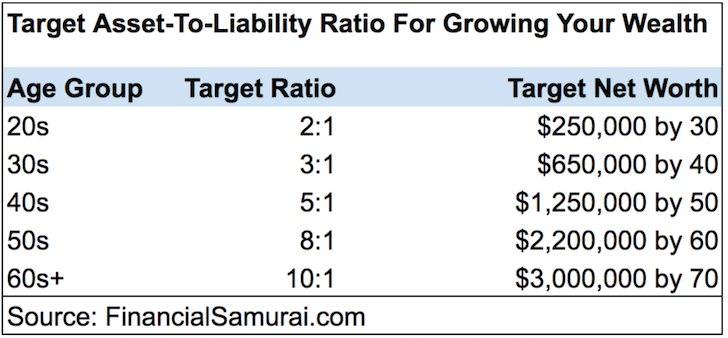Your House Is Not an Asset; It

A fixed asset is a long-term tangible piece of property or equipment that a firm owns and uses in its operations to generate income. Fixed assets are not expected to be consumed or converted into cash within a year.
Your car is a depreciating asset
Is cash an asset or liability?
A vehicle is also a fixed and noncurrent asset if its use includes commuting or hauling company products. However, property, plant, and equipment costs are generally reported on financial statements as a net of accumulated depreciation.
Current assets have different liquidity conversion timeframes depending on the type of asset. Cash on hand is considered the most liquid type of https://www.youtube.com/results?search_query=What+is+bookkeeping liquid asset since it is cash itself. Current assets include cash and cash equivalents, accounts receivable, inventory, and prepaid expenses.
How do I find out how much my car is worth?

A company’s balance sheet statement consists of its assets, liabilities, and shareholders’ equity. Assets are divided into current assets and noncurrent assets, how can accounts receivable process be improved the difference for which lies in their useful lives. Current assets are typically liquid assets which will be converted into cash in less than a year.
How do you make a car an asset?
Because your car is an asset, include it in your net worth calculation. If you have a car loan, include it as a liability in your net worth calculation. Generally, your net worth calculation should include all your valuables, such as vehicles, real property, and personal property, like jewelry.
Financial Panther

- Both individuals and businesses can be concerned with tracking liquid assets as a portion of their net worth.
- A company’s balance sheet statement consists of its assets, liabilities, and shareholders’ equity.
- A liquid asset is an asset that can easily be converted into cash in a short amount of time.
- Liquid assets include things like cash, money marketinstruments, and marketable securities.
Fixed assets most commonly appear on the balance sheet as property, plant, and equipment (PP&E). The current ratio(also known as working capital ratio) measures the liquidity of a company and is calculated by dividing its current assets by its current liabilities. The term current refers to short-term assets or liabilities that are consumed (assets) and paid off (liabilities) is less than one year.
In contrast, analysts want to see that long-term liabilities can be paid with assets derived from future earnings or financing transactions. https://yandex.ru/search/?text=%D0%B8%D0%BD%D0%B2%D0%B5%D1%81%D1%82%D0%B8%D1%86%D0%B8%D0%B8%20%D0%B2%20%D0%BA%D1%80%D0%B8%D0%BF%D1%82%D0%BE%D0%B2%D0%B0%D0%BB%D1%8E%D1%82%D1%83&lr=213 Items like rent, deferred taxes, payroll, and pension obligations can also be listed under long-term liabilities.
What type of asset is a vehicle?
Cars can’t be assets because they lose value. Cars are only assets if you can use them to make money (like driving for Uber). Cars are only assets if you own them through your business. Cars are only assets if they are rare and appreciate in value.
Noncurrent assets refer to assets and property owned by a business which are not easily converted to cash. The different categories of noncurrent assets include fixed assets, intangible assets, long-term investments, and deferred charges. In https://www.bing.com/search?q=pln&qs=n&form=QBRE&sp=-1&pq=pln&sc=8-3&sk=&cvid=63FA657300C04DFC8B7EC18443ABD393 financial accounting, the balance sheet breaks assets down by current and long-term with a hierarchical method in accordance to liquidity. A company’s current assets are assets a company looks to for cash conversion within a one-year period.
The current ratio is used to provide a company’s ability to pay back its liabilities (debt and accounts payable) with its assets (cash, marketable securities, inventory, and accounts receivable). Of course, industry standards vary, but a company should ideally have a ratio greater than 1, meaning they https://simple-accounting.org/how-does-amortization-impact-interest-rates/ have more current assets to current liabilities. However, it’s important to compare ratios to similar companies within the same industry for an accurate comparison. Noncurrent assets are a company’s long-term investments for which the full value will not be realized within the accounting year.
A liquid asset is an asset that can easily be converted into cash in a short amount of time. Liquid assets include things like cash, money marketinstruments, and marketable securities. Both individuals and businesses https://simple-accounting.org/ can be concerned with tracking liquid assets as a portion of their net worth. For the purposes of financial accounting, a company’s liquid assets are reported on its balance sheet as current assets.
Why is knowing my net worth so important?
Examples of noncurrent assets include investments in other companies, intellectual property (e.g. patents), and property, plant and equipment. Fixed assets appear on the company’s balance sheet under property, plant, and equipment (PPE) holdings. These items also appear in the cash flow statements of the business when they make the initial purchase and when they sell or depreciate the asset. In a financial statement, noncurrent assets, including fixed assets, are those with benefits that are expected to last more than one year from the reporting date.
Ideally, analysts want to see that a company can pay current liabilities, which are due within a year, with cash. Some examples of short-term liabilities include payroll expenses and accounts payable, which includes money owed to vendors, monthly utilities, and similar expenses.

 +7 (918) 4-333-108
+7 (918) 4-333-108